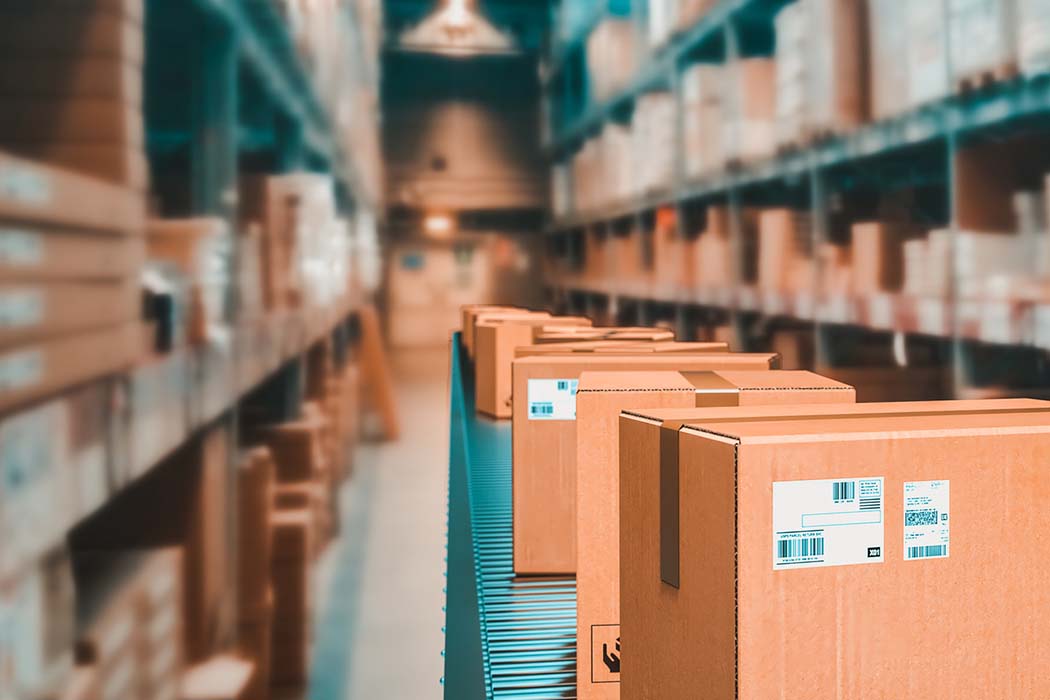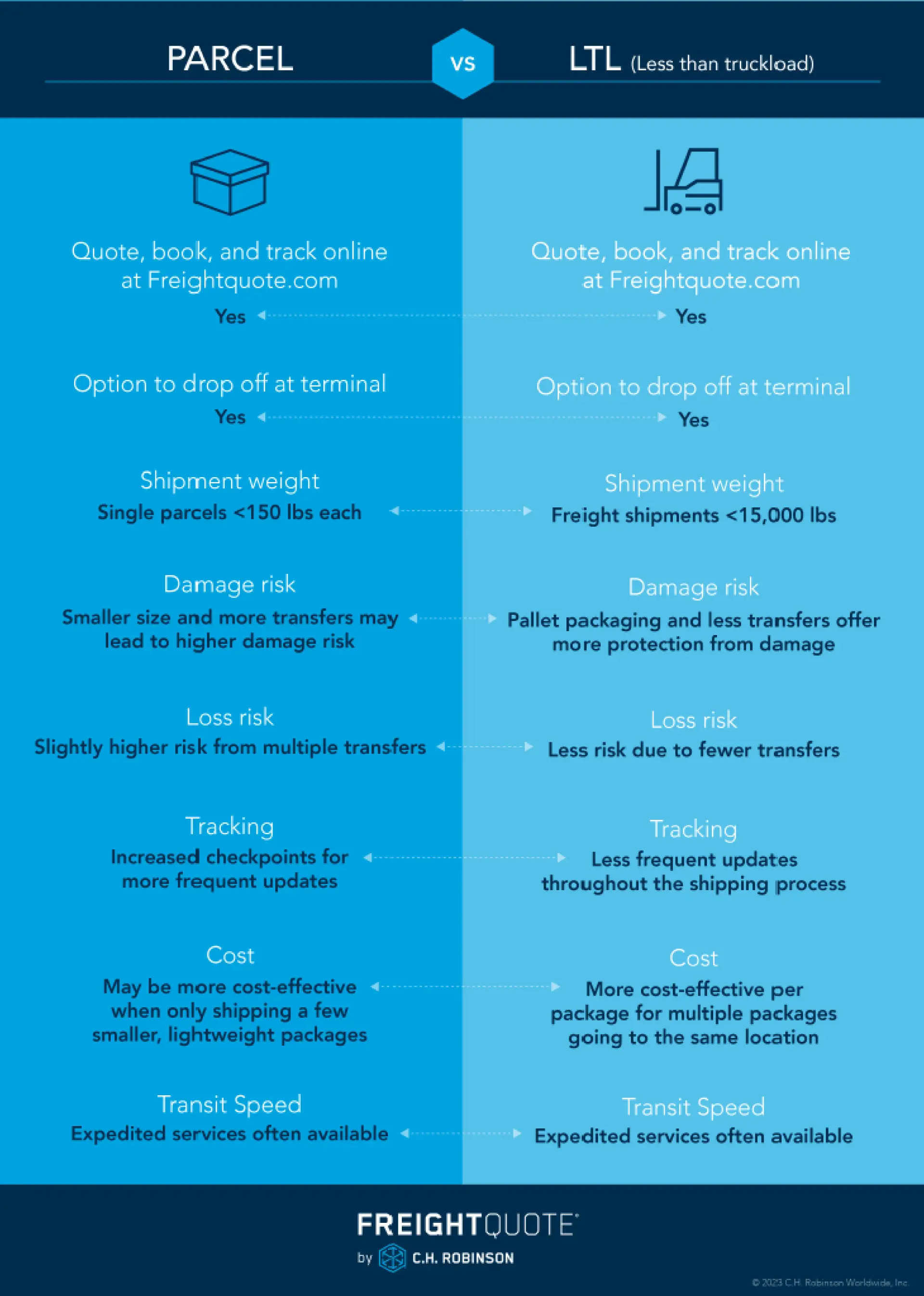Parcel vs. Less than Truckload Shipping: Choosing the Best Mode for your Shipment
September 26, 2023

Less than truckload shipping (LTL) is a common option for small business shippers to move goods. Parcel shipping, or package shipping, is another cost-effective option when you’re looking to transport smaller items. In this post, we’ll take a deeper look at both shipping methods.
Key differences between parcel and LTL shipping
While both have their own inherent advantages and drawbacks, when to choose parcel shipping vs. when to choose LTL is not always clear. If you’re looking for a quick way to evaluate the differences in shipping methods, the infographic below can help.

When deciding between the two shipping methods, it can be difficult to know for certain which option better suits your needs. Read on for a closer look at what makes LTL shipping different from parcel shipping, so you can more easily choose the mode that is best for your business, saving you time and money.
What is parcel shipping
Parcel shipping is typically used for sending just a few packages that are below 150 pounds and can be lifted without assistance. Packages are typically smaller than the ones LTL shipping handles, which makes for a process that has unique benefits and hurdles.
The parcel shipping process has more checkpoints and possible transfers involved. Parcel shipping can carry a higher risk because of this, as smaller packages can more easily be lost or damaged. However, more checkpoints allow shippers as well as parcel delivery companies to track shipments more closely, which is a plus for everyone!
Parcel shipping is generally easier and more flexible when it comes to the pickup process. Driver pickup fees are much smaller for parcel shipping than for LTL shipping. If you don’t want drivers coming to your location, drop-off locations are prevalent. Many parcel carriers offer drop-off locations that are open during regular business hours, so you can drop your shipments off rather than having to arrange a pickup. Some locations even include after hours drop boxes for very small packages.
Finally, parcel shipping tends to cost less than LTL shipping (due to the large volume it offers), making it an economical choice if you’re sending a few smaller, lightweight packages.
When to choose parcel shipping
Parcel shipping is ideal for shipments under 150 pounds that include smaller-sized packages. Choose this option when your shipment fits those criteria, and when you’d like detailed tracking along with flexibility in your pickup options.
What is LTL shipping?
Unlike parcel or package shipping, LTL shipping typically deals with larger packages. This means that bulky or uniquely shaped freight is best sent using LTL shipping.
LTL shipments are usually palletized and move together, so they will arrive at the destination at the same time. With their larger size comes fewer checkpoints, which can be a pro or a con for carriers. With fewer check-ins, there are also fewer hands on the packages, so there is a smaller chance of loss or damage. Fewer checkpoints also means less frequent tracking updates.
LTL shipping is ideal when all your packages will be delivered at the same location. And even if the boxes are small and light, LTL shipping allows you to transport more items together in one place while saving you money on shipment per package. Shipping a pallet containing 5 boxes is more cost-effective than shipping 5 boxes separately.
When to choose LTL shipping
Due to its ability to handle larger shipments, LTL shipping is a good option for shippers with freight weighing more than 150 pounds, or with a larger number of packages. Choose LTL as your shipping option when you’d like all your packages to be delivered to the same destination and when your freight is more than package shippers can handle, but not enough to fill a full truckload.
Do you have a shipment to book?
There are key differences between parcel and LTL shipping that are helpful to know when booking your shipments. While size plays a large role, these two shipping methods also vary by how they are handled, transferred, and delivered. No matter which mode you choose, make sure to include accurate dimensions and weight when quoting your shipment. Watch this video for help getting the most accurate quote.
Freightquote makes it easy to find the right shipping method for your needs. We offer web-based, mobile-responsive technology that provides multi-modal shipping options, including parcel, LTL and truckload shipping. Simply use our tool to get competitive quotes, book your shipments, and track deliveries online.
Freightquote can help you access the lowest prices on shipping, Check out our other videos and blogs for helpful information on small business shipping to find out how. And when you’re ready to book and ship, Freightquote is here for you with accurate quotes, simple shipments, and real-time updates about your freight.
Start your online quote todayTopics:
Get Your Shipping Quote



